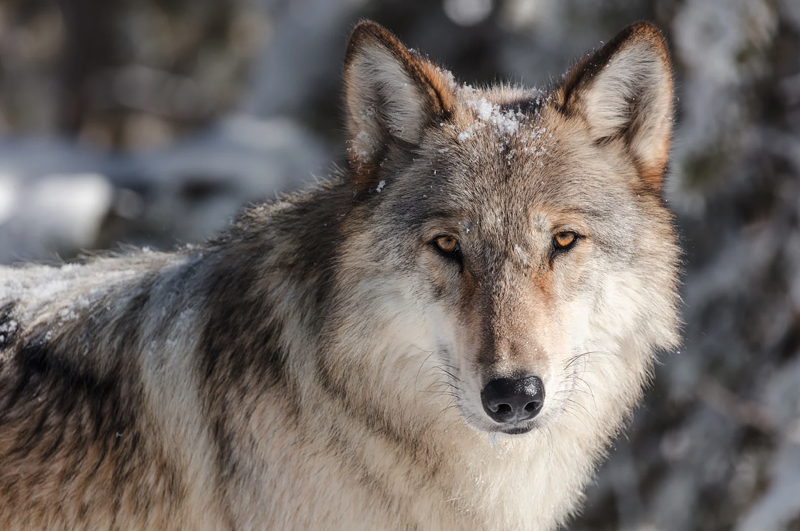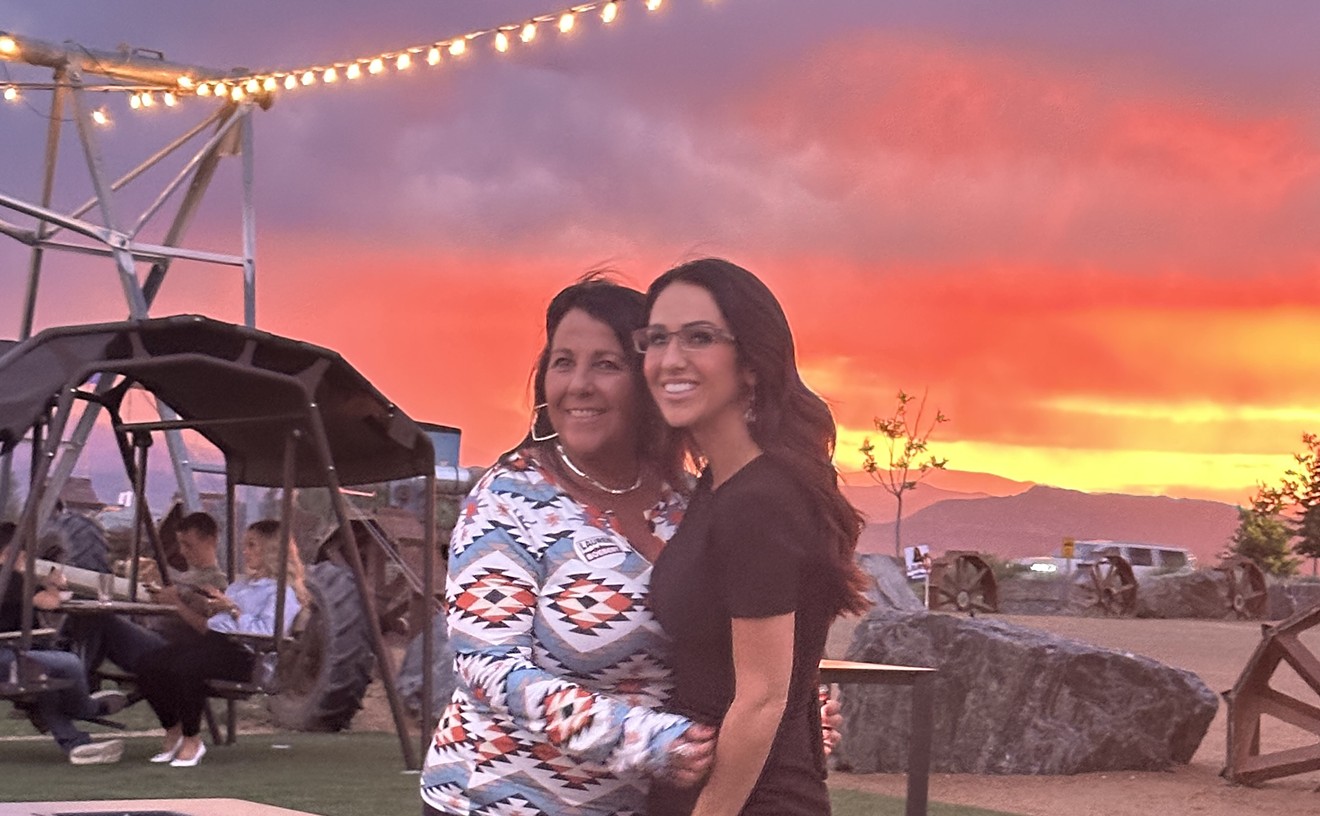In partnership with thirteen other conservation organizations, WildEarth Guardians has announced its own plan for wolf restoration in the state, saying that the Colorado Parks and Wildlife process has focused too much on the negative impacts of wolves and stakeholders who are against wolf reintroduction, and not enough on scientific evidence about the best way forward for the state’s future wolf population.
The wolf reintroduction process started when voters narrowly passed Proposition 114 in 2020; the measure calls for the state to reintroduce wolves by the end of 2023. Last December, CPW said that its staff would present a reintroduction plan to the Colorado Parks and Wildlife Commission in late 2022 or early 2023.
The conservation groups want to publicize their own proposal before CPW finalizes its plan so that their recommendations can be considered and perhaps incorporated, Lindsay Larris, wildlife program director for WildEarth Guardians, said in a July 19 webinar. They plan to present their ideas to the commission at its July 21 meeting.
“What we’ve seen is a process that is not following the spirit or intent of Proposition 114,” Larris says, explaining that since the ballot measure advocated for restoration of wolves, the official plan should allow the population to sustain itself and self-regulate, rather than restrain wolves to certain areas or subject them to lethal population controls.
To ensure that many voices are represented in the final wolf reintroduction plan, Parks and Wildlife appointed a Technical Working Group of reintroduction and management experts as well as a Stakeholder Advisory Group of people from various geographic areas that might be impacted by wolf reintroduction. But according to the fourteen conservation organizations that signed off on this plan, the two CPW groups have “uplifted the voices of ranchers, outfitters, trappers and hunters over others en route to a plan that is likely to limit the possibilities of wolves on the Colorado landscape.”
"The Stakeholder Advisory Group has a number of wolf proponents as well as scientists, ranchers and many other stakeholders who provide valuable and meaningful input to that process," says CPW branding and communications section manager Rebecca Ferrell. "The SAG was intentionally convened to represent the wide variety of perspectives that people in the state have on wolves. The SAG is not skewed to prefer any particular perspective on wolves, but rather to honor the will of the voters with regard to Proposition 114 and successfully implement the law."
The conservation groups want to offer another perspective. “Our plan is more focused on restoration and positive benefits,” Larris says.
Their plan, which took a cue from Oregon’s wolf management plan, consists of four parts. The first identifies wolf reintroduction areas: 17 million acres of suitable wolf habitat, including 11 million acres on the Western Slope, the specific region that Proposition 114 specified for wolf reintroduction. The areas were determined by searching the state for places with a prey base and public land, then removing those areas that also have dense roads and human presence. The result is twelve new pack zones, as well as a thirteenth zone already occupied by a wolf pack near North Park.
The second part of the plan is population goals. The conservation groups believe a minimum of 750 wolves is necessary for successful restoration; according to Larris, CPW seems to want to introduce only about 150 to 250 wolves. The conservation groups believe that over 4,000 wolves could easily be sustained; they suggest about 1,000 are needed to provide enough genetic variation for a sustainable population long-term, and to give room for negative population growth in the case of drought or other factors.
“This is kind of a fancy way of saying that the more wolves that you have, the better their chance of recovery,” Larris says.
The third part of the plan includes a vision for three stages of wolf management. In phase one, wolves would stay listed as endangered in the state to ensure the highest level of protection. CPW would introduce a breeding pair in each of the twelve newly identified zones, with a goal of those twelve pairs, as well as the current pack, to be successful for two years. Lethal control would be prohibited except in defense of life during phase one; CPW harassment measures meant to deter wolves from interaction with livestock are allowed and encouraged in each phase.
In phase two, the goal is thirty successful breeding pairs across at least eight of the identified zones, or a statewide population of 300 wolves, for four consecutive years. This phase would see CPW do more to mitigate wolf and livestock conflict and expand lethal control measures to privately owned land in emergencies. The plan specifies that there should never be lethal management of wolves on public lands because the wolves will keep their own populations in check. Additionally, wolves would be downgraded to threatened rather than endangered during phase two.
In phase three, wolves would be downlisted to a non-game species, meaning they are no longer endangered but can’t be hunted. Aubyn Royall, Colorado state director for the Humane Society of the United States, said during the webinar that she’s noticed a focus on recreational hunting of wolves during the CPW engagement process. That goes against the intent of the ballot measure, which was to restore wolves as a non-game species, Royall says, adding that the CPW plan seems likely to include a phase four where wolves can be hunted.
According to CPW, it is developing a restoration technique, management plan, depredation compensation program and recovery goals to meet the requirement that it must establish a self-sustaining wolf population in the state.
To complete phase three of the conservation groups' plan, there must be 75 successful breeding pairs in ten of the zones, or 750 wolves, for four consecutive years. It would add a provision that, in addition to previously allowed lethal control, landowners could kill wolves in the process of attacking livestock.
Part four of the plan is compensation considerations for farmers and ranchers. Larris says that this area is the one where groups are most deferential to CPW, but the conservation groups want to ensure that conflict mitigation techniques are required before someone receives compensation for the loss of livestock.
The plan also specifies that CPW must confirm all wolf depredation events (as it does now), rather than allow Wildlife Services, which housed in the United States Department of Agriculture, to do so. A whistleblower from inside the USDA told The Intercept that Wildlife Services investigators in New Mexico were incorrectly confirming Mexican gray wolf kills in the state.
“I’m excited that there’s an unadulterated conservation perspective that’s now part of the conversation,” Royall says. Although CPW has at times been perceived as anti-wolf, she adds that CPW and the Parks and Wildlife Commission are making progress toward a more conservation-based and scientific approach.
The department will also work with the U.S. Fish and Wildlife Service, because gray wolves are a nationally recognized endangered species. CPW has requested that Fish and Wildlife designate gray wolves as an experimental population under section 10(j) of the Endangered Species Act, which allows localities to provide more flexibility for incidental harm to endangered species by enforcing the weaker protections of a threatened species during the process of reintroduction. That process will provide more chances for public engagement but could take until December 2023, the deadline for reintroduction, to initiate.
“This plan helps us realize the promise of Proposition 114, the reason that everybody voted for it,” Delia Malone, an ecologist and wildlife chair for the Colorado Sierra Club, said at the webinar. “This plan speaks to the hope of those Coloradans that voted for the recovery of our ecological health in our wildlands.”
This story has been updated to include a CPW statement.
[
{
"name": "Air - MediumRectangle - Inline Content - Mobile Display Size",
"component": "12017618",
"insertPoint": "2",
"requiredCountToDisplay": "2",
"watchElement": ".fdn-content-body",
"astAdList": [
{
"adType": "rectangle",
"displayTargets": "mobile"
}
]
},{
"name": "Editor Picks",
"component": "17242653",
"insertPoint": "4",
"requiredCountToDisplay": "1",
"watchElement": ".fdn-content-body",
"astAdList": [
{
"adType": "rectangle",
"displayTargets": "desktop|tablet"
},{
"adType": "rectangle",
"displayTargets": "desktop|tablet|mobile"
}
]
},{
"name": "Inline Links",
"component": "18838239",
"insertPoint": "8th",
"startingPoint": 8,
"requiredCountToDisplay": "7",
"maxInsertions": 25
},{
"name": "Air - MediumRectangle - Combo - Inline Content",
"component": "17261320",
"insertPoint": "8th",
"startingPoint": 8,
"requiredCountToDisplay": "7",
"maxInsertions": 25,
"watchElement": ".fdn-content-body",
"astAdList": [
{
"adType": "rectangle",
"displayTargets": "desktop|tablet"
},{
"adType": "rectangle",
"displayTargets": "desktop|tablet|mobile"
}
]
},{
"name": "Inline Links",
"component": "18838239",
"insertPoint": "8th",
"startingPoint": 12,
"requiredCountToDisplay": "11",
"maxInsertions": 25
},{
"name": "Air - Leaderboard Tower - Combo - Inline Content",
"component": "17261321",
"insertPoint": "8th",
"startingPoint": 12,
"requiredCountToDisplay": "11",
"maxInsertions": 25,
"watchElement": ".fdn-content-body",
"astAdList": [
{
"adType": "leaderboardInlineContent",
"displayTargets": "desktop|tablet"
},{
"adType": "tower",
"displayTargets": "mobile"
}
]
}
]











